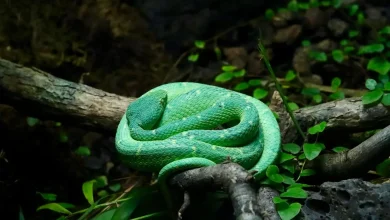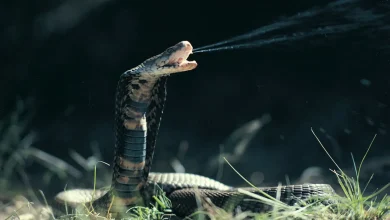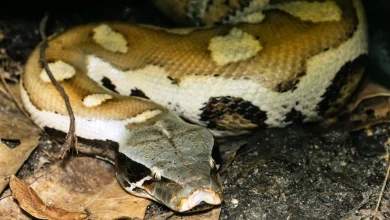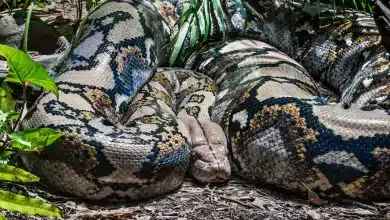Indo-Malayan Mountain Pit Viper
Indo-Malayan Mountain Pit Viper (Ovophis monticola convictus)
Indo-Malayan Mountain Pit Viper is a venomous pitviper found in Asia. Currently, two subspecies are recognized, including the subspecies described here. Recent work state that most of these should be considered as separate species.
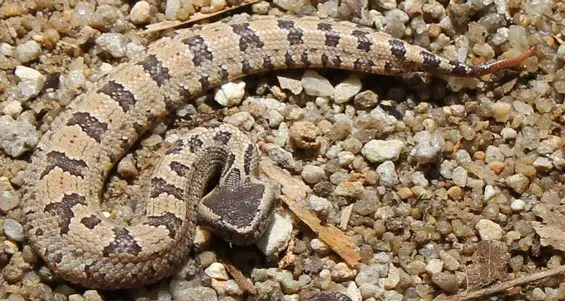
[Photo credit and © Stewart King, used with permission.]
Name: Indo-Malayan Mountain Pit Viper, Mountain Pit Viper, Blotched Pit Viper, Mountain Iron-head Snake, Chinese Mountain Pit Viper
Sci Name: Ovophis monticola convictus
Length: Males are about 1/2 meter and females are typically just over 1 meter.
Description: Short stubby snakes with large (in comparison to body and neck) triangular heads.
Range: Thailand, on the far west coast from far north to the very far south along the peninsula. Bangladesh, Bhutan, Cambodia, China, Hong Kong, Indonesia, India, Laos, Malaysia, Myanmar, Nepal, Taiwan, Vietnam, Tibet.
Habitat: The mountain pit viper pictured above was found at the base of a waterfall on the damp ground covered with small round rocks. These snakes can also be found up to over 2,000 meters in altitude. They seem to prefer tea plantations and other areas with a lot of vegetation. They have also been found in homes.
The exact location of the snake here was Ton Pariwat Waterfall in Phang Nga, Thailand.
Active Time: The literature says nocturnal, but this snake was found in bright sunshine in the middle of the day.
Food: Mice and other rodents and small mammals, lizards, and insectivores. One guy that keeps these snakes posted in a forum that his mountain viper bites the prey and constricts it too and wonders why the overkill when most vipers will bite and hold, or bite and follow until the prey dies. I think this probably has something to do with the mountain viper not being all that mobile. I couldn’t imagine it going fast through brush to chase something down that wasn’t dead yet. Especially the males of the species – they look like slugs – short and fat.
Defensive Behavior: These snakes hiss loudly and strike quickly. We don’t have information about fang length, but the head resembles the Malayan Pit Viper which has very long fangs. As usual with venomous snakes, great care should be taken when in close proximity.
Venom Toxicity: Venom has been known to cause fatalities. The rating by Toxinology.com was mid-scale, meaning moderate to seriously toxic.
Offspring: Eggs.
Bite Treatment: Bite victims of the Malayan mountain pit viper will be painful, swell, have blistering and minimal or no necrosis, bleeding, and shock may result.
Antivenom: There is no antivenom
Notes: The snake shown here was found by a 6-year-old boy who was kicking it. He thought it was a stick that was bouncing back at him when he kicked it. Turns out the snake was striking repeatedly. The boy was not bitten, his mother saw him and stopped him. These are slow-moving snakes, terrestrial and primarily nocturnal the literature reads – but this snake was found in the sunshine in the heat of the day.
Scientific classification:
Kingdom: Animalia
Phylum: Chordata
Subphylum: Vertebrata
Class: Reptilia
Order: Squamata
Suborder: Serpentes
Family: Viperidae
Subfamily: Crotalinae
Genus: Ovophis
Species: O. monticola convictus
Binomial name – Ovophis monticola convictus, classified by Günther in the year 1864.

